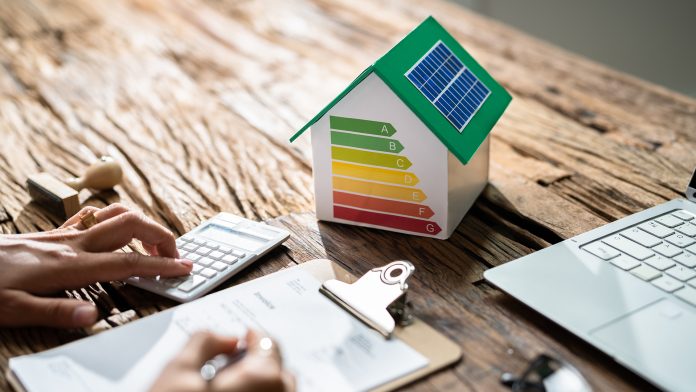Managing energy costs has become business critical for real estate owners and managers over the last year. There are some simple tactics you can employ to make significant savings and lay the foundations for energy-smart buildings.
During 2022, at least one in five UK businesses cited managing energy costs as their biggest concern.1 Thousands of smaller companies and those already facing tight profit margins are fighting for survival, while larger businesses running sizeable property estates are facing dramatically higher costs.
At the same time, building energy use accounts for almost 30% of global carbon emissions2 and for a considerable proportion of any real estate business’ own carbon footprint, making energy efficiency a key issue for investors in the commercial real estate sector.
These challenges require sophisticated solutions, including the use of technology to make commercial buildings smarter. But sophistication need not mean complexity or a vast up-front expense. In this article, we discuss five simple and scalable ways that technology can help to tackle energy consumption, driving positive impacts on both carbon footprint and energy costs.
Take the easy wins to manage energy costs
There’s no need to start with a big-ticket solution, small steps can make an enormous difference and deliver some of the biggest gains when managing energy costs. For example, heating or lighting spaces that are not being used are a huge waste of energy in commercial properties. Basic automation, such as turning off lights when rooms are empty, and not using heating, ventilation and air-conditioning (HVAC) in rooms that are unused for long periods, are simple solutions that can make a measurable difference.
A study by Cambridge University on its own energy use found that a single light left on overnight all year wastes £24.3 For a large commercial property estate with tens of thousands of lights, the sums soon add up. An ‘if this, then that’ approach to environmental controls based on occupancy information is an effective way to ensure energy isn’t wasted and performance can be optimised. However, organisations should be cautious about relying on single sources of data like motion sensors to determine when a space is in use.
Don’t rely on a single data source
I would hazard a guess that most office workers have experienced one or both of these scenarios: walking past an empty room with the lights turned on; sitting in a room where the lights have turned off. Both of these scenarios are clear signs that motion sensors, while a great start, is simply not an accurate way to determine occupancy. But before investing in hundreds or even thousands of purpose-built sensors and people counters, organisations should think about what they already have. For instance, access control, Wi-Fi, and docking and conferencing equipment all collect data that can more accurately determine occupancy. By layering these sources together, you can get a much clearer and more accurate picture of when and how buildings are being used, which can support more effective automation and ultimately manage energy costs and consumption without impacting the end-user experience.
Go beyond on and off
Turning the lights off in empty rooms is a basic step, but further efficiencies can be gained with a more granular analysis. The number of people in a room makes a significant difference to its temperature – as anyone who has found themselves melting in a packed meeting will attest.
Meeting rooms should be used with energy efficiency in mind, and HVAC systems adjusted to take account of exactly how many people are in a space. It’s a common occurrence for rooms to be heated, but when they overheat due to the number of people in the space, the air conditioning kicks in. If environmental controls are automatically adapted based on occupancy, both comfort and efficiency can be optimised.
Understanding intentions can help with managing energy costs
Automating building systems based on real-time occupancy is great, but it’s also not efficient to constantly turn things on and off. Understanding when a space is intended to be used, together with what actually happens in real time, can help to create a further step change in efficiency.

For example, a meeting room where systems are powered up for a meeting, but the meeting is then cancelled or ends up shorter than expected. If the same space is scheduled for use straight after the first event, then it may not make sense to power down everything only to power everything back up again 20 minutes later.
One leading university in Canada was able to achieve a 64%4 reduction in energy consumption when it applied this approach. This may be an extreme example, but most large-scale commercial property managers would be grateful for a fraction of these savings across their buildings.
Educate and empower employees
The people working in a building are a vital part of its energy efficiency. Educating and incentivising staff to work in parallel with smart systems can help with managing energy costs. For instance, ensuring PCs are turned off overnight and setting shorter time periods for equipment to enter automatic sleep mode can collectively have a big impact, particularly for larger workforces or multi-tenancy buildings.
Helping people to understand their impact, and giving them practical ways to reduce it is essential to any efforts to reduce energy consumption. Organisations may consider loyalty programmes or gamification to encourage and reinforce these positive behaviours, rewarding people with tokens or points that can later be redeemed for coffee at an onsite cafe, for instance.
This doesn’t have to be limited to the four walls of the building. If organisations are looking to drive sustainable travel choices, they could offer staff points when employees charge an electric vehicle or access a bike store.
The journey to optimum energy efficiency and Net Zero carbon emissions for commercial buildings will be a long one, and technology will play a vital role in it. With so many technology solutions on the market, it’s easy to end up with an array of solutions that are both difficult and time-consuming to manage.
Instead, organisations should focus on creating a flexible and dynamic technology platform, capable of integrating with a range of endpoints to bring data together to drive specific actions. Taking this approach also means you can start small, scaling solutions up as they demonstrate value, and seamlessly evolving as new technologies enter the market. While this will no doubt support the need to optimise energy performance to reduce costs and carbon footprint, it will also pave the way for creating smart, sustainable buildings that deliver an exceptional experience for users and drive business value.
References
- Food and drink service firms are most likely to cut trading to tackle energy costs – Office for National Statistics (ons.gov.uk)
- 40% of emissions come from real estate; here’s how the sector can decarbonise – United Nations Environment – Finance Initiative (unepfi.org) Note: This UN article states that 40% of emissions come from the real estate sector. But of this, 30% is from construction while 70% is from buildings operations (heat light etc). The 30% figure is thus 70% of 40%. Or 28%.
- Facts & Figures | Sustainability (cam.ac.uk)
- Source: Monstarlab







